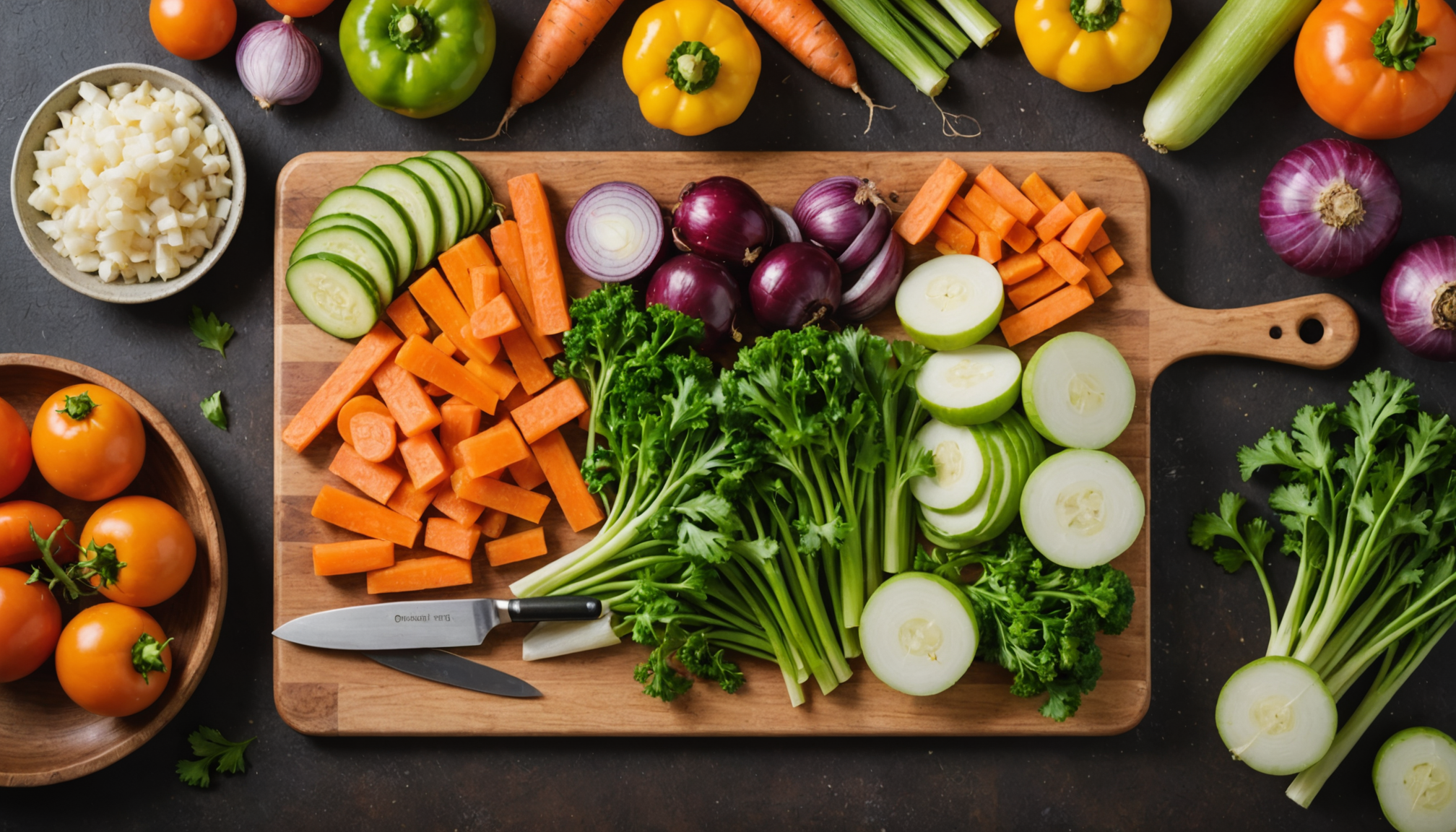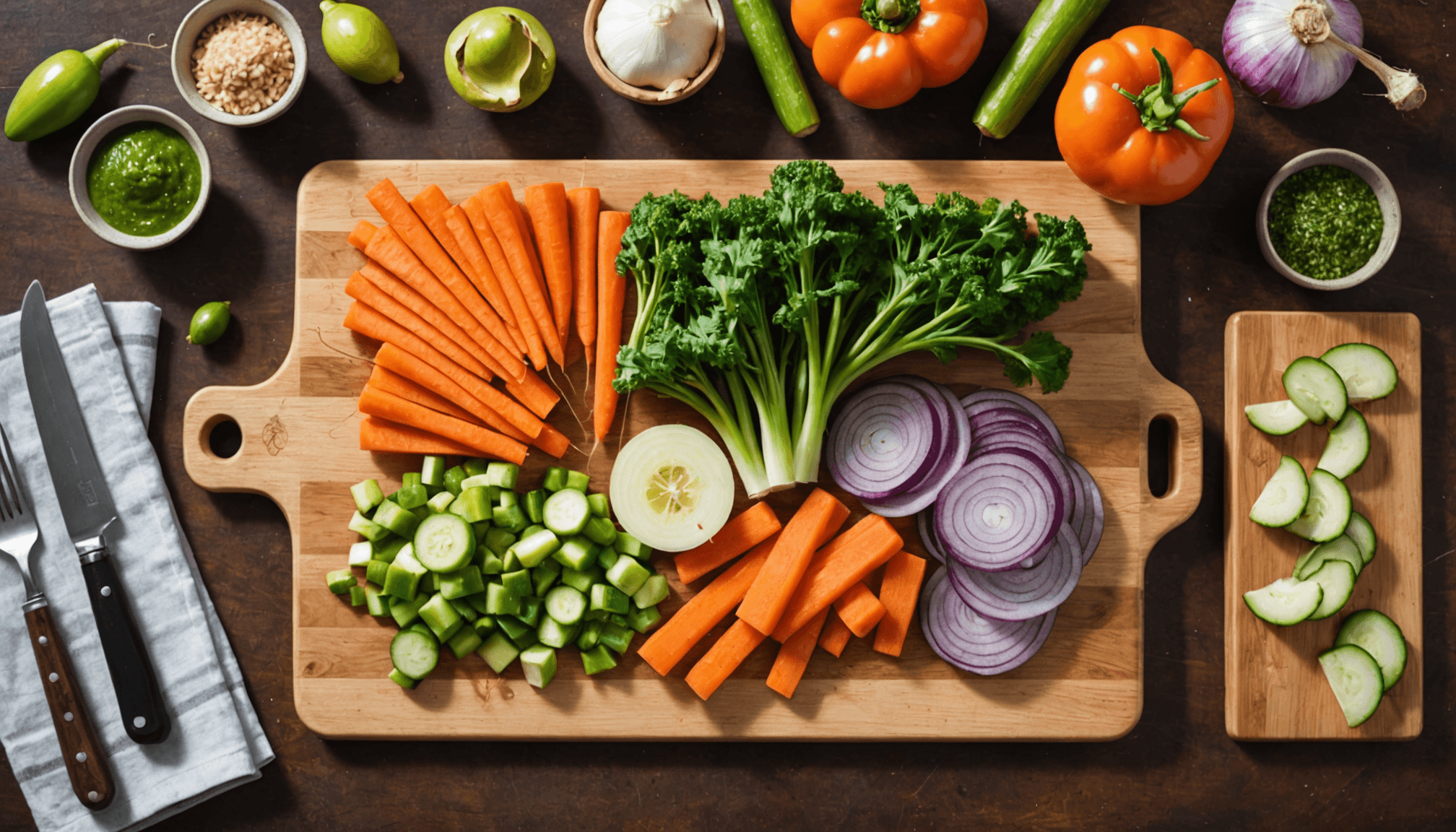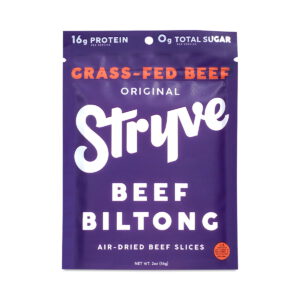- Overview of Slow Cooker Organic Beef Stew
- Ingredients Needed
- Preparation Steps
- Cooking Instructions
- Serving Suggestions
- Storage Tips
When you embark on your grocery shopping adventure for a delightful beef stew, particularly one that’s organic and wholesome, it’s essential to equip yourself with some savvy tips to ensure you bring home the best ingredients while sticking to a healthy, budget-friendly plan. Whether you’re shopping online or in-store, think of it as an opportunity to embrace a range of nutritious options that cater to your family’s diverse dietary needs.
First off, make a list of all essentials before you head out. This not only helps streamline your shopping experience but also minimizes impulsive buys. When searching for organic produce, look for seasonal items available at your local farmer’s market. For instance, buying root vegetables like carrots and potatoes during their peak season not only supports local agriculture but also guarantees fresher and tastier options.
- Local Foods: Visit nearby farms or farmers’ markets. The freshness and flavor of local produce will elevate your organic dinner.
- Healthy Foods: Incorporate a variety of colorful vegetables such as bell peppers, zucchini, and leafy greens that add both nutrition and vibrancy to your meal.
- Vegan Foods: If you’re shopping for vegan alternatives, consider plant-based options such as lentils or chickpeas, which can be great additions to your stew for extra protein.
- Budget-Friendly Foods: Buy in bulk when you can. Ingredients like dried beans and grains are often cheaper when purchased in larger quantities and can be stored for long periods.
- Fitness Foods: Look for lean cuts of beef like sirloin or tenderloin, which are lower in fat and higher in protein, perfect for a post-workout meal.
- Organic Foods: For those committed to organic choices, keep an eye out for meats and produce labeled USDA Organic, which ensures they were grown without harmful pesticides or fertilizers.
Safety should also be a priority while shopping, especially when purchasing online. Make sure to buy from reputable retailers and always check the expiration dates on perishable items. Read reviews and ratings for new brands to ensure their quality meets your standards. Moreover, when shopping for meat, ensure that it is properly packaged and free from any leaks which can compromise freshness and safety.
Lastly, if you find a particular ingredient is on sale or in bulk but is something you don’t use frequently, consider ways to incorporate it into multiple meals or freeze it for later use. This practice ensures you’re making the most out of each purchase while keeping your kitchen stocked with nutritious staples.
Ingredients Needed
For a hearty and fulfilling organic beef stew, selecting the right ingredients is crucial to achieving rich flavors and wholesome nutrition. Here is a comprehensive list of components you will need to prepare this comforting dish, focusing on organic and fresh options.
1. Organic Beef: Choose an appropriate cut of beef, such as chuck roast or brisket. These cuts become tender and flavorful when slow-cooked. Aim for approximately 2-3 pounds, ensuring it is grass-fed and organic for the healthiest option.
2. Vegetables: A medley of fresh vegetables will enhance the stew’s flavor profile. Include:
– 4 medium organic carrots, diced
– 3 large organic potatoes, cubed (Yukon Gold or russet are ideal)
– 3 stalks of organic celery, sliced
– 1 large organic onion, chopped
– 2-3 cloves of organic garlic, minced
– Optional: 1 cup of organic mushrooms, sliced for added depth
3. Herbs and Spices: Focusing on organic herbs and spices can make a significant difference in flavor:
– 2-3 teaspoons of salt (to taste)
– 1 teaspoon of freshly ground black pepper
– 1 tablespoon of dried thyme or 2-3 sprigs of fresh thyme
– 1 bay leaf
– Optional: 1 teaspoon of smoked paprika for a hint of smokiness
4. Liquid: A well-balanced stew requires a good base. Use:
– 4 cups of organic beef broth or stock (homemade or low-sodium)
– 1 cup of organic red wine (optional; adds depth to flavors)
5. Thickener: To achieve a rich consistency but without losing the organic integrity:
– 2 tablespoons of organic tomato paste
– Optional: 2 tablespoons of cornstarch mixed with cold water for thickening if needed during the final cooking stages
6. Optional Add-Ins: For additional fiber and texture, consider including:
– 1 cup of organic green beans, trimmed and cut into pieces
– 1 cup of organic peas (added in the last hour of cooking)
Here is a table outlining substitutions and alternatives to accommodate dietary preferences:
| Ingredient | Substitution | Notes |
|---|---|---|
| Organic Beef | Organic Lentils or Portobello Mushrooms | For a vegetarian option, replace beef with these plant-based ingredients. |
| Red Wine | Additional Beef Broth | Omit wine to keep it alcohol-free; adjust broth quantity accordingly. |
| Potatoes | Organic Cauliflower | For a lower-carb option, substitute with cauliflower florets. |
| Tomato Paste | Chopped Organic Tomatoes | Can use fresh tomatoes; adjust cooking time to allow for breakdown. |
By gathering these ingredients, you set the foundation for a delicious organic beef stew that delivers on taste, comfort, and health. Consider opting for local organic farms to procure your produce and meat; this not only supports sustainable agriculture but often results in a fresher stew bursting with flavors.
Preparation Steps

Preparing your ingredients for a comforting organic beef stew can be an enjoyable process if approached thoughtfully. Begin by gathering your essential tools, such as a sharp knife, cutting board, measuring cups, and a sturdy mixing bowl. Having everything organized will help you maintain efficiency and focus as you delve into the chopping, measuring, and mixing.
When you start, wash all your fresh produce under cool running water. This step is particularly crucial for organic vegetables, which may still carry traces of soil. Embrace the rich sensory experience: the bright colors, fresh scents, and the satisfying crunch as you chop. Start with the vegetables; aim to create uniform pieces so they cook evenly. For your organic beef, cut it into bite-sized cubes if it’s not pre-cut. Retaining the fat on grass-fed beef helps enhance the flavor during cooking.
Next, season your beef for added depth before it joins the vegetables in the slow cooker. To marinate, sprinkle salt and pepper generously, and consider incorporating a tablespoon of your chosen herbs or spices, along with a splash of red wine if you desire. Allow the beef to sit for about 15-20 minutes to absorb these flavors. This step not only enhances the flavor but also ensures that the beef will enrich the stew as it cooks.
While your beef is marinating, the vegetables can be dealt with efficiently. After dicing your carrots, potatoes, celery, and onions, toss them into your mixing bowl, and add the minced garlic, herbs, and any optional ingredients like mushrooms or green beans. Mixing them together with a light dash of olive oil can enhance their flavor and help them integrate well in the cooking process.
If you are looking to save some time during busy weeks, consider prepping these ingredients ahead of time. Chop your vegetables and store them in airtight containers in the refrigerator. You can also cut your beef and marinate it a day prior, making the dinner prep on the day of cooking significantly quicker.
As you prepare, keep food safety in mind. Make sure that your cutting boards and any utensils that came into contact with raw meat are thoroughly cleaned with hot, soapy water to avoid cross-contamination. When purchasing ingredients, be vigilant about expiration dates and packaging, particularly for meats and fresh produce. Always choose ingredients labeled as organic when possible; looking for certified organic labels ensures that you’re not only prioritizing your family’s health but also supporting sustainable practices.
In preparing your comforting organic beef stew, find joy in this process. Engage your senses, organize your workspace, and empower yourself with knowledge about what makes the best ingredients for your meal. With a little preparation, your kitchen will soon be filled with the warm, inviting aromas of a home-cooked stew that promises to nourish and please every palate.
Cooking Instructions

To begin cooking, start by browning the organic beef. In a large skillet over medium-high heat, add a splash of olive oil. Once the oil is hot, carefully place the seasoned beef cubes in the skillet, being cautious not to overcrowd the pan. Sear the beef on all sides until it develops a rich, brown crust, which will enhance the overall flavor of the stew. This usually takes about 5-7 minutes. Once browned, transfer the beef to the slow cooker.
Next, using the same skillet, add the chopped onions. Sauté them for about 3-4 minutes until they become translucent, soaking up the savory residues left in the pan from the beef. This step creates a beautiful flavor base. If you’re including mushrooms, add them next and cook for an additional 2-3 minutes until they release their moisture and begin to brown. After this, transfer the onions and mushrooms into the slow cooker with the beef.
Now it’s time to incorporate the vegetables. Add the diced carrots, cubed potatoes, and sliced celery into the slow cooker, mixing everything together gently to ensure an even distribution. Sprinkle in the thyme, bay leaf, salt, black pepper, and any additional spices you wish to include. These fragrant herbs are essential for crafting a hearty beef stew, where each bite should draw out the rich, comforting flavors.
For the liquid component, pour in the organic beef broth, making sure all the ingredients are submerged and that there is enough liquid to cover the vegetables and meat. If you are using red wine, add it at this point; it will not only deepen the flavors but also provide a delightful aroma as it cooks. Finally, stir in the tomato paste, ensuring it is well mixed into the broth.
Once everything is combined in the slow cooker, cover it with the lid and set it to cook. For a perfect beef stew, select the low setting and a cooking time of 8-10 hours, or opt for the high setting for about 4-6 hours if you’re pressed for time. The slow cooking process allows the beef to tenderize and flavors to meld beautifully, transforming simple, fresh ingredients into a delightful organic dinner.
“Slow cooking is the perfect way to let ingredients shine and flavors develop, creating comfort food that warms both body and soul.”
During the last hour of cooking, you can add optional ingredients such as green beans or peas, which will tenderize without turning mushy. If you prefer your beef stew thicker, dissolve cornstarch in cold water and stir it into the stew during the final cooking stage. Let it simmer for an additional 20-30 minutes until thickened to your desired consistency.
As you approach the end of the cooking time, take a moment to taste and adjust seasoning if necessary. This is your opportunity to elevate your dish by fine-tuning the salt, pepper, or any herbs according to your preference. Remember that a well-seasoned beef stew is key to making it satisfying and delicious.
With the cooking process nearly complete, prepare your serving dishes and perhaps some crusty organic bread on the side for delightful dipping. As the stew finishes cooking, it will fill your kitchen with an irresistible aroma, a comforting signal that a hearty dinner is on the table soon.
Serving Suggestions

When it comes to serving slow cooker organic beef stew, the beauty lies not only in the stew itself but also in the accompanying elements that can elevate the dining experience. This dish is a quintessential comfort food that perfectly embodies the spirit of sharing a warm meal with family and friends. Begin by ladling the stew into bowls, making sure to include generous portions of the tender beef and vegetables in each serving. The vibrant colors of the vegetables create an inviting presentation that speaks to both health and flavor.
For a wholesome organic dinner, consider pairing your beef stew with freshly baked bread or rolls. A crusty sourdough or whole-grain loaf can be perfect for sopping up the savory broth, enhancing both texture and flavor. If you prefer a lighter option, serve the stew over a bed of fluffy quinoa or brown rice, providing an excellent base that absorbs the rich sauce and offers an additional nutritional boost.
To add a touch of freshness, garnish each bowl with finely chopped herbs such as parsley or chives. This not only brightens the dish visually but also enhances the flavors harmoniously. If you’re expecting guests, consider making a simple side salad with seasonal greens, dressed lightly with a vinaigrette to cleanse the palate between bites of the hearty stew. The crunch of fresh vegetables can provide a delightful contrast to the soft, melty goodness of the slow-cooked ingredients.
Moreover, think about the drinks that might complement your comforting beef stew. A glass of full-bodied red wine can enhance the flavors, especially if you used some in your cooking. On the other hand, if you wish to keep it non-alcoholic, consider serving a refreshing sparkling water with a slice of lemon or a herbal iced tea, which can be a perfect balance against the richness of the stew.
Encouraging conversation at mealtime is always a wonderful way to connect; consider sharing stories or past experiences related to your favorite comfort foods. This engages everyone, making your dinner feel even more special. As the stew warms up both hearts and bodies, the gathering will become not just about food but an experience to cherish.
- How long can I keep leftover beef stew in the refrigerator?
- Leftover beef stew can be stored in the refrigerator for about 3 to 4 days. Ensure it is kept in an airtight container to maintain freshness.
- Can I freeze beef stew?
- Absolutely! Beef stew freezes well. Just allow it to cool completely before transferring it to a freezer-safe container. It can last for up to 3 months in the freezer.
- What are some good side dishes to serve with beef stew?
- Good side dishes include crusty bread, creamy mashed potatoes, or a fresh salad. Each complements the rich flavors of the beef stew beautifully.
- Can I use other types of meat in this stew?
- Yes, you can substitute beef with other meats such as lamb or chicken. Just adjust the cooking time based on the meat used to ensure it’s tender.
- Is it okay to add more vegetables to the stew?
- Definitely! Feel free to customize your beef stew by adding more vegetables like bell peppers, peas, or even sweet potatoes for additional flavor and nutrients.
- How can I make my stew thicker?
- To thicken your stew, you can use cornstarch mixed with water, add a bit of flour, or include pureed beans. Each option will help achieve a richer consistency.
- What is the difference between stewing and slow cooking?
- Stewing typically involves cooking food in liquid on the stovetop, while slow cooking refers to using a slow cooker at a low temperature over an extended time, making it great for tenderizing meat and blending flavors.
Storage Tips

To ensure your delicious organic beef stew remains fresh and safe for consumption, proper storage techniques play a critical role. After enjoying your meal, any leftovers should be placed in airtight containers. This not only helps retain the rich flavors of your stew but also prevents bacterial growth. Be sure to allow the stew to cool down to room temperature before transferring it to the refrigerator, as placing hot food directly into the fridge can raise the temperature inside, creating an unsafe environment for other items.
Leftover beef stew can be safely stored in the refrigerator for up to 3-4 days. For longer storage, consider freezing it. Beef stew freezes exceptionally well, making it a great meal prep option. To freeze, let the stew cool completely, then pour it into freezer-safe containers, leaving about an inch of space at the top, as liquids expand when frozen. If you label your containers with the date, it will help track their freshness, as frozen stew can last for about 3 months in the freezer.
When you’re ready to eat your frozen beef stew, it’s best to thaw it in the refrigerator overnight before reheating, allowing for even warming without compromising texture and flavor. When reheating, ensure that the stew reaches an internal temperature of at least 165°F (74°C) to eliminate any lingering bacteria. You can do this on the stovetop over medium heat, stirring occasionally, or in the microwave, ensuring even heating by stirring halfway through.
Safety is paramount when it comes to food storage, especially with the organic ingredients in your beef stew. Always check for signs of spoilage before reheating—look for any off smells or changes in texture. If ever in doubt about the safety of the food, it’s wiser to err on the side of caution and discard any questionable items.
If you find that you are regularly left with excess leftovers, consider adjusting your portion sizes. Preparing smaller amounts can help minimize waste and ensure you enjoy your organic dinner at its freshest. Finding the right balance will not only save you on food waste but also create a more enjoyable eating experience with every heartwarming bowl of beef stew.
New Customers Offer!
Free Gift for the new customer
$24 Value, When You Subscrib Visit Thrive Market












